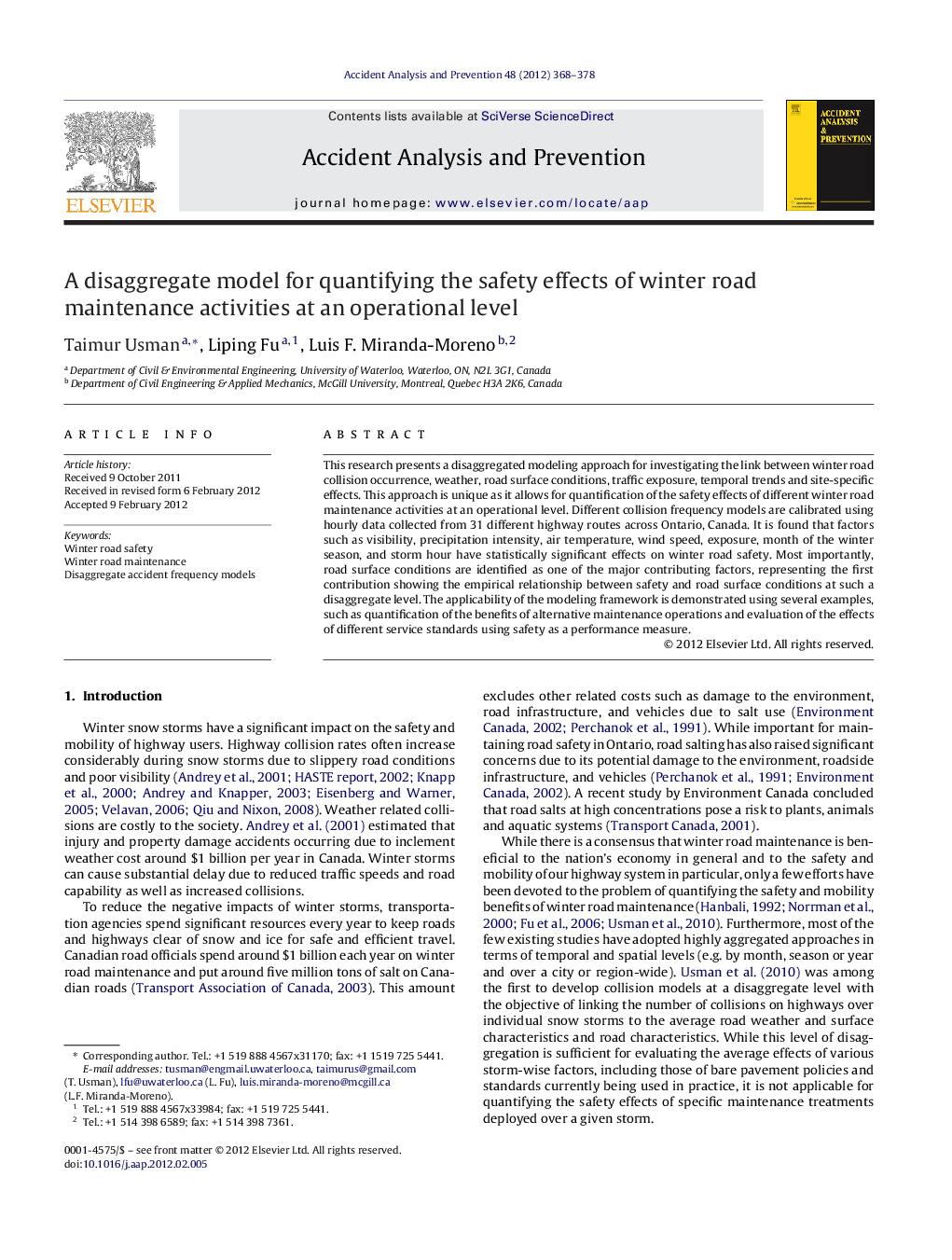| Article ID | Journal | Published Year | Pages | File Type |
|---|---|---|---|---|
| 572608 | Accident Analysis & Prevention | 2012 | 11 Pages |
This research presents a disaggregated modeling approach for investigating the link between winter road collision occurrence, weather, road surface conditions, traffic exposure, temporal trends and site-specific effects. This approach is unique as it allows for quantification of the safety effects of different winter road maintenance activities at an operational level. Different collision frequency models are calibrated using hourly data collected from 31 different highway routes across Ontario, Canada. It is found that factors such as visibility, precipitation intensity, air temperature, wind speed, exposure, month of the winter season, and storm hour have statistically significant effects on winter road safety. Most importantly, road surface conditions are identified as one of the major contributing factors, representing the first contribution showing the empirical relationship between safety and road surface conditions at such a disaggregate level. The applicability of the modeling framework is demonstrated using several examples, such as quantification of the benefits of alternative maintenance operations and evaluation of the effects of different service standards using safety as a performance measure.
